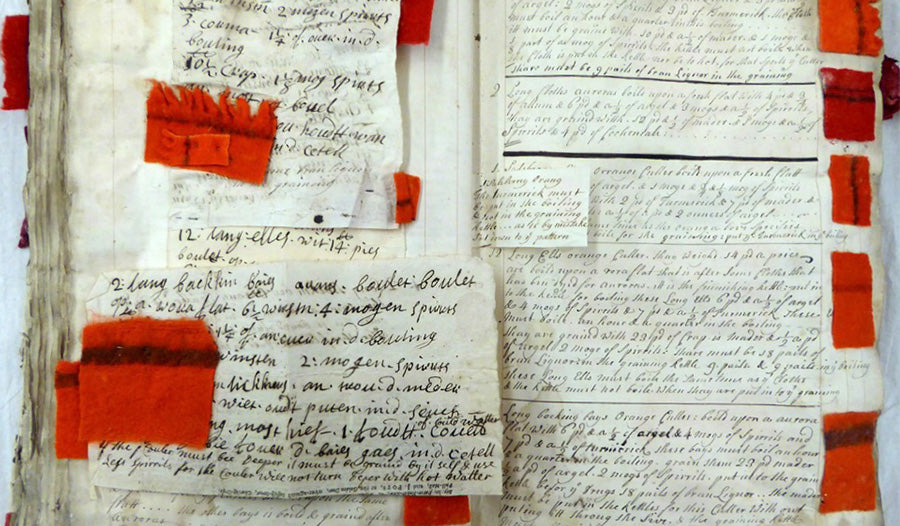
Katelynn Ulmer - Conservation Efforts Commence on 18th Century Crutchley Family Dyeing Records

Image: Six dyeing recipes from the 1720’s in Flemish and English. Image Credit: southwarkheritage.wordpress.com.
In 2011, the Southwark Local History Library and Archive received a donation from descendants of an 18th century family dyeing business owned by John Crutchley. This donation included fourteen hardbound dyeing and business account books dating from 1716–1744. The Crutchley family owned dye-works in Southwark, located near the south bank of the Thames between Clink Street and Deadman’s Place. Three of the fourteen books donated succumbed to water damage and were selected by the National Manuscripts Conservation Trust to be treated for mould, have pages cleaned and resized, and loose dye samples be fixed.

Image: Dyers’ calculations from the dyehouse in the 1730s. Image credit: southwarkheritage.wordpress.com.
The three books chosen for conservation efforts feature a recipe book with broadcloth dyeing instructions, a pattern book, and an ingredient book, all featuring vibrant dyed samples. The colours of these samples are still vivid, nearly 300 years later, and range from delicate pastel yellows, lilacs, and pinks, to bright and bold oranges and yellows. It has been inferred that the Crutchley family most likely specialised in red colours due to the abundance of red swatches found throughout these books.

Image: Vibrant coloured wool fabrics dyed in July 1738 for Mr. Acland and Mr. Lammas. Image Credit: southwarkheritage.wordpress.com.
It is rare to see such a material culture relating to dyed textile production of this time period survive. The importance of this collection was recognised in 2019 when it was inscribed in the UNESCO Memory of the World Register. After the conservation efforts are complete, historical research can be further developed and The Southwark Local History Library and Archive will begin working with local artisans to reproduce dye recipes found within the books. These records will serve as a rich reference for historians of textile production, dress and textile history, dyes and dyeing, economics, and business. Geographically, these records can also tell historians just how far the Crutchley dyeing business extended onto the Continent.
For more information about the Crutchley family dyeing business records, visit the National Manuscripts Conservation Trust.